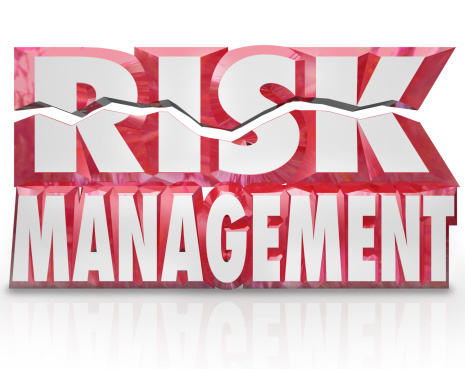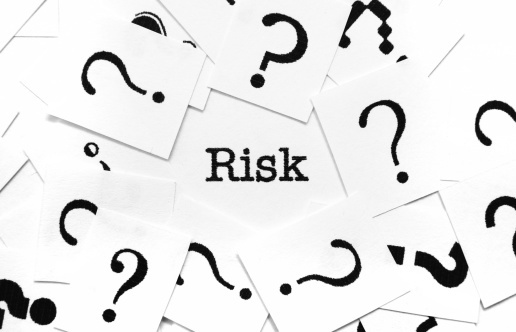أنشئ حسابًا أو سجّل الدخول للانضمام إلى مجتمعك المهني.
Risk control is a Risk management method in which insurance fail to be done, or it can be done side by side with insurance to lower premiums. There are multiple actions can be taken to control risks.
* Avoidance: leave the whole operation
* Loss prevention: reduce the frequency of the risk, examples of this action can be security systems, multiple checkpoints, preventive maintenance.
* Loss Reduction: reduce the severity of a risk, example: provide a gym membership for employees to prevent physical injuries.
* Segregate operations: keep the core operations in more than one location in case an accident happen in one location, the other location is safe. Example, Duplication, build two factories in two different locations.

The third step in the risk management process is examining the feasibility of risk management alternatives. This step facilitates the subsequent steps of selecting and implementing the appropriate risk management techniques. To make these selection decisions, an insurance or risk management professional must determine which risk management techniques most effectively address an organization’s loss exposures. All risk management techniques fall into one of two categories: risk control or risk financing.
Risk control goals are designed to support the risk management program goals, which in turn support the individual’s or organization’s goals. To that end, risk control techniques must be effective and efficient, comply with legal requirements, assist in promoting life safety, and that ensure that a business can retain continuity during and immediately following a loss.

If you’re a business leader, then you already know the importance of risk control. It’s imperative that your business has a formal policy to limit the loss of assets and income.

Here are the 6 techniques associated with risk control.
1. Avoidance
Avoidance is the best means of loss control. This is because, as the name implies, you’re avoiding the risk completely. If your efforts at avoiding the loss have been successful, then there is a 0% probability that you’ll suffer a loss (from that particular risk factor, anyway). This is why avoidance is generally the first of the risk control techniques that’s considered. It’s a means of completely eliminating a threat.
2. Loss Prevention
Loss prevention is a technique that limits, rather than eliminates, loss. Instead of avoiding a risk completely, this technique accepts a risk but attempts to minimize the loss as a result of it. For example, storing inventory in a warehouse means that it is susceptible to theft. However, since there really is no way to avoid it, a loss prevention program is put in place to minimize the loss. This program can include patrolling security guards, video cameras, and secured storage facilities.
3. Loss Reduction
Loss reduction is a technique that not only accepts risk, but accepts the fact that loss might occur as a result of the risk. This technique will seek to minimize the loss in the event of some type of threat. For example, a company might need to store flammable material in a warehouse. Company management realizes that this is a necessary risk and decides to install state-of-the-art water sprinklers in the warehouse. If a fire occurs, the amount of loss will be minimized.

4. Separation
Separation is a risk control technique that involves dispersing key assets. This ensures that if something catastrophic occurs at one location, the impact to the business is limited to the assets only at that location. On the other hand, if all assets were at that location, then the business would face a much more serious challenge. An example of this is when a company utilizes a geographically diversified workforce.
5. Duplication
Duplication is a risk control technique that essentially involves the creation of a backup plan. This is often necessary with technology. A failure with an information systems server shouldn’t bring the whole business to a halt. Instead, a backup or fail-over server should be readily available for access in the event that the primary server fails. Another example of duplication as a risk control technique is when a company makes use of a disaster recovery service.
6. Diversification
Diversification is a risk control technique that allocates business resources to create multiple lines of business that offer a variety of products and/or services in different industries. With diversification, a significant revenue loss from one line of business will not cause irreparable harm to the company’s bottom line.
Risk control is a key component in any sound company strategy. It’s necessary to ensure long-term organization sustainability and profitability.

Risk Control in a Business means to have diversified Business. If an enterprise is having only construction as their main business, due to external factors they are in more risk rather if they have diversified their business in other industries they can lower their risk.
Rule of Risk - High Risk - High Profit or High Loss; Low Risk - Low Profit or Low Loss

Risks are phenomena and events threaten the achievement of the objectives, has a negative impact "on the continuity of the institution aiming to achieve its mission, and risk management as a science as they rely on
Realistic analysis of structural risks and the use of standard mathematical models, as it requires choosing the right model, and try to circulate successfully and effectively in the enterprise, while taking the principle of caution, making risk management of existing arts on real knowledge of banking environment, gained through professionalism. It can be said that risk management is a comprehensive system that includes appropriate banking and financial environment create a process to manage and support the measurement and mitigation, monitoring and monitoring and the creation of adequate arrangements for internal control.

There are different types of Risk Controls, which are as follows :
Risk Control Methods :
1. Avoidance – There’s a great deal of risk. You don’t want to assume the risk and it can’t be transferred, so you avoid the risk altogether. This method eliminates any possibility of loss. It is achieved either by abandoning or never undertaking an activity or asset.
2. Loss Prevention – Reduces the frequency or likelihood of a “particular” loss. Examples include:
· Improve security measures to reduce the possibility of arson or theft.
· Improve maintenance of facilities to reduce the possibility of a tripping hazard.
3. Loss Reduction – Reduces the severity or cost of a “particular” loss. Examples include:
· Require the use of seatbelts to reduce the chance of bodily injury in a vehicle collision.
· Require the use of hearing protection to reduce the chance of a hearing loss.
· Reduce the cost of workers’ compensation claims through the use of return to work programs.
4. Segregate Losses – Arrange your agency’s activities and assets to prevent one event from causing loss to the whole. There are two methods – duplication and separation.
· Duplication – relies on spare or duplicates that are only used if assets or activities suffer a loss.
· Separation – your activities or assets are distributed among multiple locations.

Risk Control is to manage the risk.
This can be done in many ways. Avoid, Reduce, Alter, Minimise, Preparedness, Diversify and the last is to Have it.
Risk and Rewards are in proportion. But having taken a Risk if you manage it properly, same Rewards can be enjoyed with lesser risk than what it was in the beginning. Thus Risk management is an essential part of any business

Risk Control Technique could be done by one of the following strategies;
1- To decrease the possibility to happen
2- To decrease the effect of happening .
For The first Point 1- To decrease the possibility to happen;
This will deal with 50% only from the total value of the risk when we are concerned with the "Risk Rating.. Examples on this is "to avoid risk of payroll money to be stolen by transferring the money through bank payroll and ATM system for employees.
For the next point 2- To decrease the effect of happening ;
This will deal only with the other 50% of the risk . And this could be made by many tools, one of the common tools is insurance , which will only deal decrease the effect but can not prevent.

Agreed with Abdul Khalique answer.


Risk control is the method by which firms evaluate potential losses and take action to reduce or eliminate such threats.




